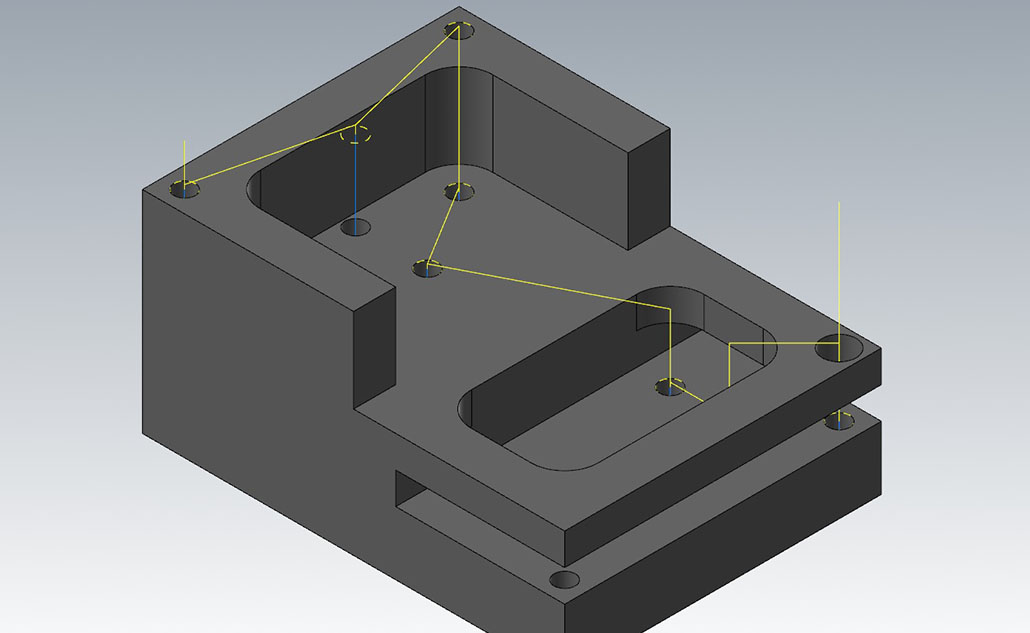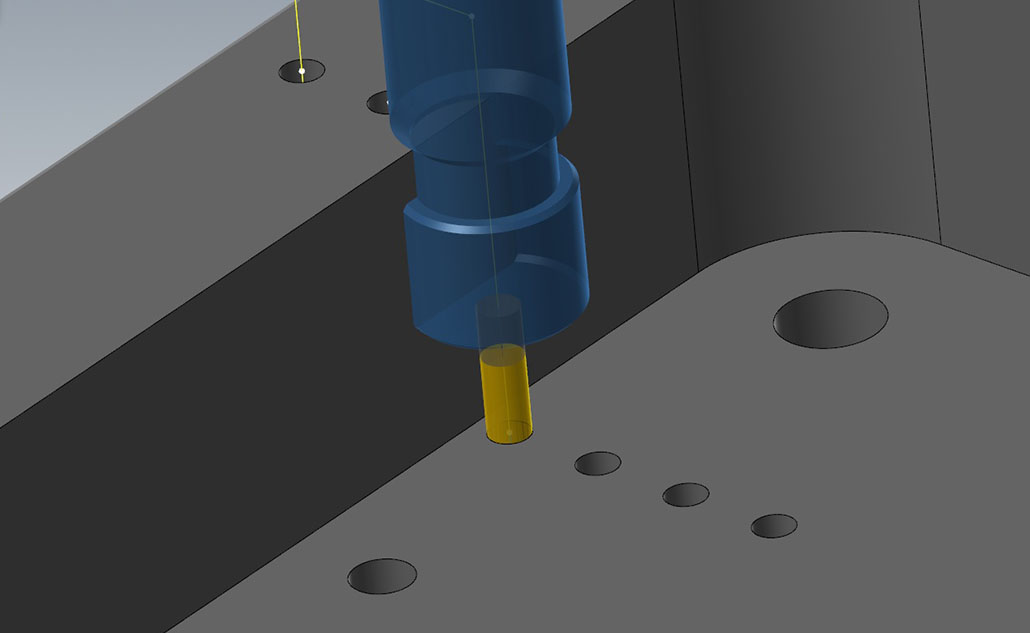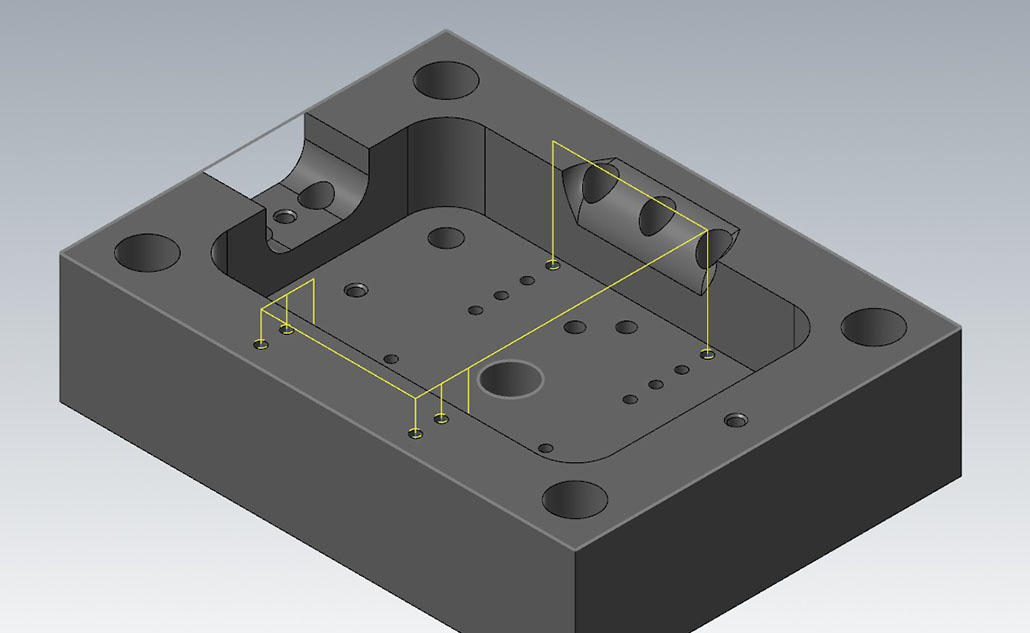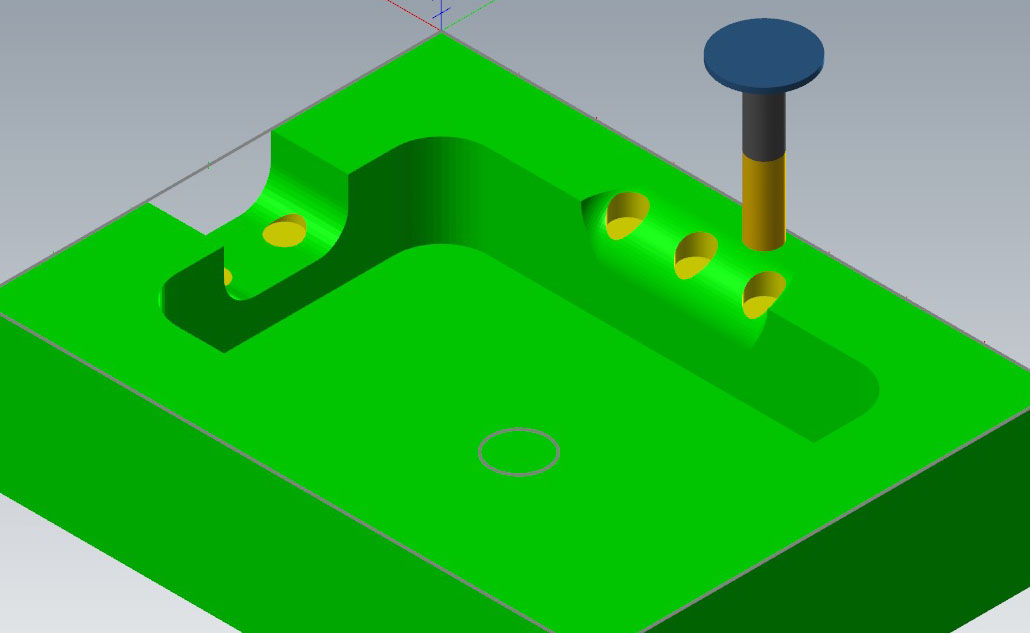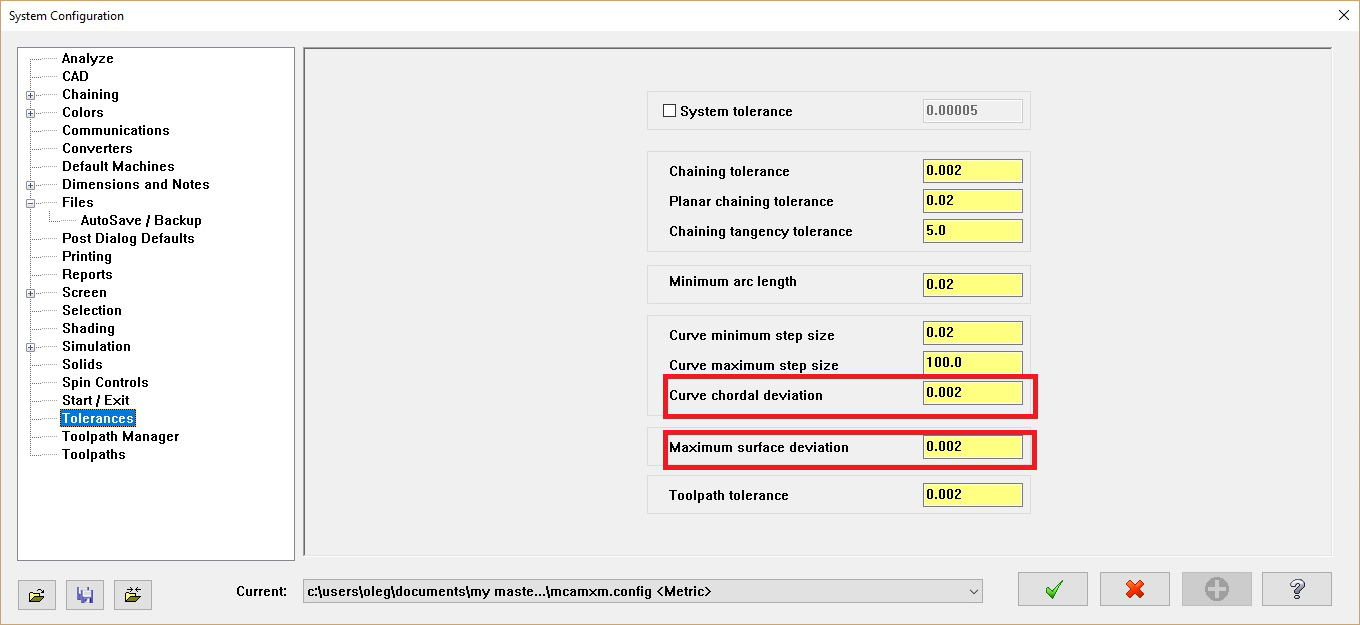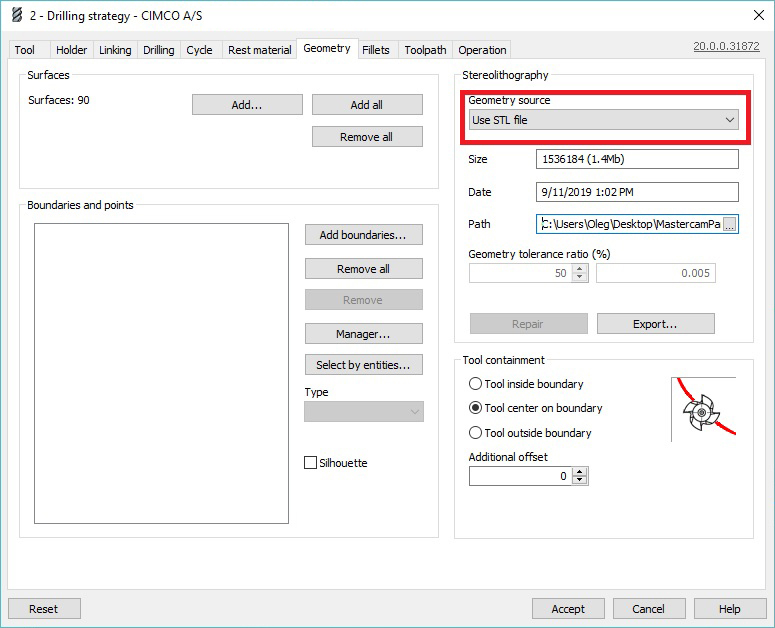HSM Performance Pack introduces new Drilling strategy
The new drilling strategy has been developed to provide users with specialized capabilities such as holder avoidance and rest machining. When using the drilling strategy, HSM Performance Pack can automatically analyse the part to avoid blind holes, gouges in linking moves and holder gouges if enabled. In the following we will look at some of the options available.
Holder collision avoidance
The new drilling strategy includes the holder collision detection policies Fail, Detect length and Trim that determine how HSM Performance Pack should react when a holder collision is detected. Fail ensures the operation always throws an error if a collision is detected. Detect length causes HSM Performance Pack to analyse the drilling toolpath and suggest a flute length that avoids any holder collisions. Trimming enables HSM Performance Pack to trim away the toolpath in collision areas and finally, there is also the option to simply ignore collisions if necessary.
Rest machining
Rest machining is another very useful option in the new drilling strategy that can be used in conjunction with the Trim collision detection policy described above. When Trim is enables holder collisions are avoided, but it might not be possible to drill all holes and to the desired depth. Rest machining makes it possible to easily run an additional drilling operation, with lower feedrate, that cleans out any remaining and unwanted material.
3D top for drilling angled and rounded surfaces
The option 3D Top is useful for pre-drilling angled and rounded surfaces which might cause the tool to slide or even break if drilled directly. With 3D Top enabled, HSM Performance Pack automatically creates the toolpath required to flatten the angled or curved area with a flat bottom tool.
STL models and tolerances
Like all other strategies in HSM Performance Pack, the drilling strategy relies on STL models which enables it to work with any kind of part. However, it is essential that model geometry is made precise enough or this can result in some holes not being detected.
When an STL model is generated in Mastercam and made available to HSM Performance Pack as part of the normal workflow, we recommend using the following settings and even smaller tolerances can be used to increase the accuracy of the drilling calculations on the model.
If the STL model has been saved to a file, from Mastercam or other CAD system, the STL file can be loaded as Source Geometry – found under the Geometry tab. This can save time by not having to wait for Mastercam to generate the STL model repeatedly.
However, when loading an STL it is important to make sure that the tolerance used for the drilling operation is greater than the one configured in the STL model. We recommend that you double the tolerance for the drilling operation compared to the STL tolerance.
Try the new drilling strategy
For those who wish to experiment with the new drilling strategy, a test part can be downloaded here.
For more information about the strategy, please see the Online Documentation.


